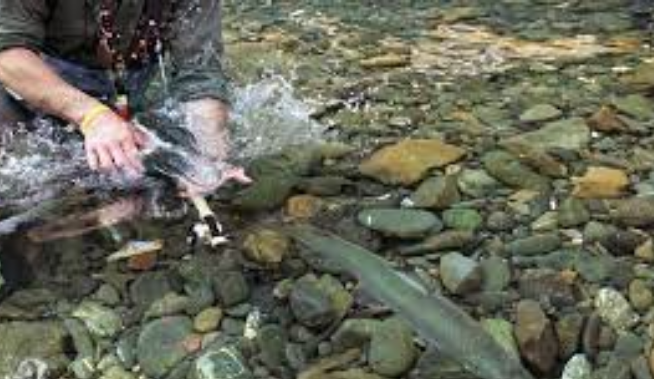Catch and release fishing and its benefits
|
Getting your Trinity Audio player ready...
|
Catch and release fishing and its benefits has become a trending topic amongst fishermen. Fishing has been a popular pastime for centuries, with people of all ages and backgrounds enjoying the thrill of catching a fish. However, in recent years, there has been a shift towards catch and release fishing. This practice involves catching a fish and then releasing it back into the water unharmed. While some may view this as a waste of time or effort, catch and release fishing actually offers numerous benefits for both anglers and the environment.

The technique
When practicing catch and release in fishing, it is important to use proper techniques to ensure the fish’s survival. First, use barbless hooks or crimp the barbs down to make it easier to remove the hook. Handle the fish gently and keep it in the water as much as possible. Use a landing net to avoid damaging the fish’s scales or fins. If taking a photo, hold the fish horizontally with wet hands and support its weight. Revive the fish by holding it in the water facing upstream until it swims away on its own. Avoid using live bait or fishing in areas where endangered species may be present.
Conservation of fish population
One of the primary benefits of catch and release fishing is that it helps to conserve fish populations. Overfishing is a major problem in many bodies of water around the world, with some species being pushed to the brink of extinction. By releasing fish back into the water, anglers can help to ensure that these populations remain healthy and sustainable for future generations.
Maintaining the health of conserving aquatic ecosystems
In addition to conserving fish populations, catch and release fishing also helps to maintain the overall health of aquatic ecosystems. When fish are caught and removed from their natural habitat, it can disrupt the delicate balance of these ecosystems. By releasing them back into the water unharmed, anglers can help to minimize this disruption and allow these ecosystems to thrive.
More humane than traditional fishing
Another benefit of catch and release fishing is that it can be more humane than traditional fishing methods. When fish are caught using traditional methods such as nets or traps, they often suffer injuries or die before they can be released back into the water. Catch and release fishing allows anglers to handle fish more carefully, reducing their risk of injury or death.
Catch and release fishing also offers numerous benefits for anglers themselves. For one thing, it can be a more challenging form of fishing than traditional methods. Catching a fish is only half the battle – successfully releasing it back into the water requires skill and finesse.
It’s fun
Additionally, catch and release fishing allows anglers to enjoy their hobby without feeling guilty about harming wildlife. Many people who enjoy fishing also have a deep respect for nature and want to do their part to protect it. Catch and release fishing allows them to do just that, while still enjoying the thrill of the catch.
The downside
Of course, there are some potential downsides to catch and release fishing as well. For one thing, not all fish are able to survive after being caught and released. Factors such as water temperature, hook placement, and handling techniques can all impact a fish’s chances of survival. Additionally, catch and release fishing can be more time-consuming than traditional methods, as anglers must take care to properly handle and release each fish they catch.
Conclusion
Despite these potential drawbacks, however, the benefits of catch and release fishing are clear. By helping to conserve fish populations, maintain healthy ecosystems, and promote humane treatment of wildlife, this practice offers numerous advantages for both anglers and the environment. As more people become aware of these benefits, it is likely that catch and release fishing will continue to grow in popularity in the years ahead.

